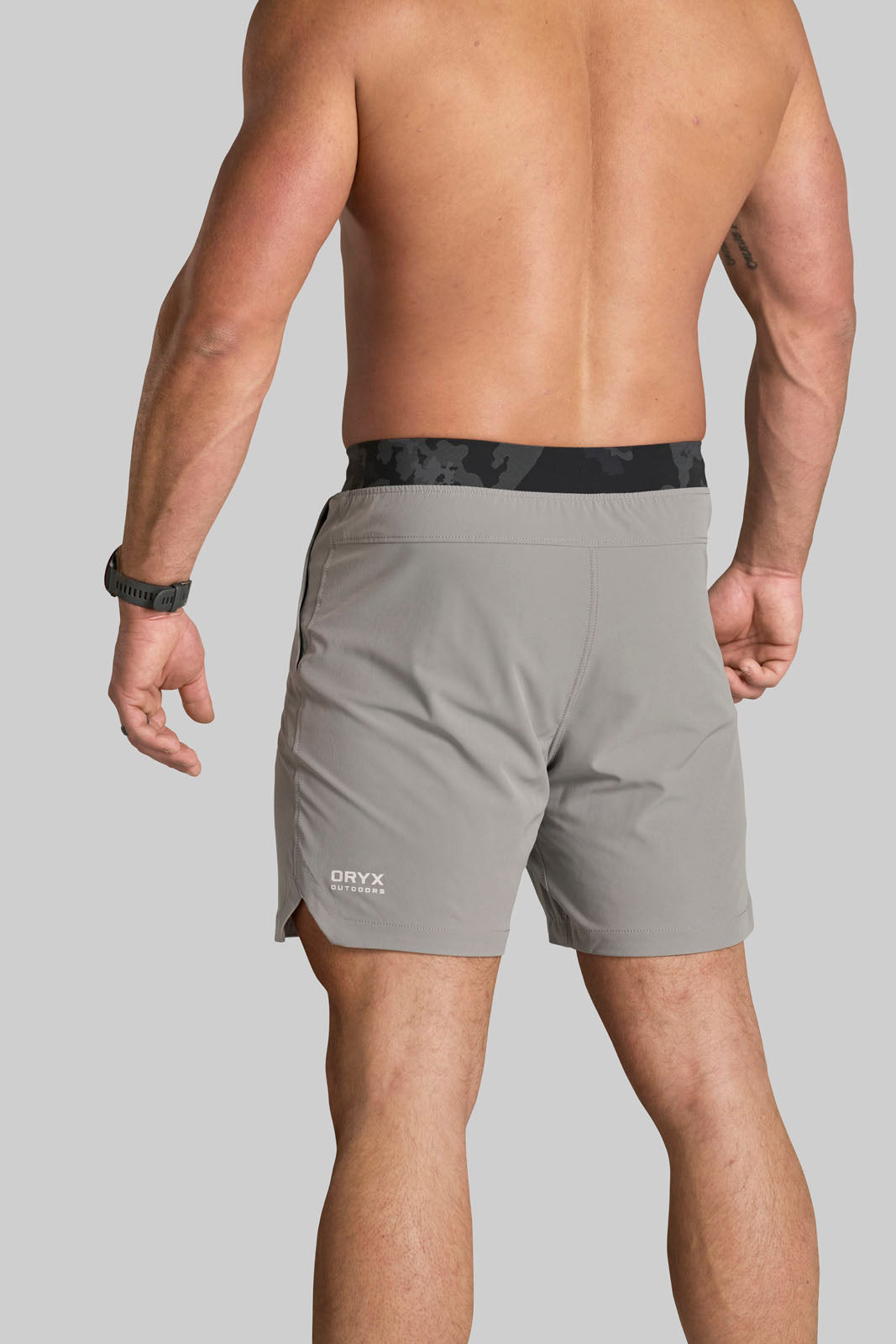Elk season is right around the corner, and the clock is ticking. Whether you’re chasing bugles in high alpine basins or stalking through dark timber, success in the mountains doesn’t happen by accident — it’s built in the months, weeks, and final days before opening morning.
This is your three-part crash course to making the most of the time left: the fitness training that will pay off when the air gets thin, the gear checklist you can’t afford to skip, and the opening day strategy to put yourself in the right place when it matters most.
Part 1: Training to Be Hunt-Ready
The terrain elk call home is no joke. Steep climbs, loose rock, deadfall, and miles of elevation gain can crush even a fit hunter if they’re not ready. Your next few weeks of training should focus on building leg strength, endurance, and mobility while also keeping your back, core, and shoulders ready for heavy pack-outs.
1. Leg Strength & Endurance
- Step-Ups with Weight: Mimic the uphill grind by doing weighted step-ups onto a bench or box. Go for time rather than reps to build stamina.
- Walking Lunges: Add a pack to simulate load. Focus on balance and smooth movement, just like you’ll need when you’re side-hilling.
- Hill Sprints: Short bursts uphill build the explosive power you need for quick moves into position.
2. Core & Back Strength
- Front-Loaded Carries: Carrying a sandbag or heavy pack in front of you works the same muscles you’ll use when hauling meat or navigating brush.
- Planks & Side Planks: Simple but critical for keeping your torso stable with a heavy pack.
3. Mobility & Recovery
- Include daily hip openers, ankle mobility drills, and hamstring stretches. Tight hips and ankles are the enemy in uneven terrain.
- Foam roll your quads, calves, and back to stay loose for long hikes.
Training in Threshold Training Shorts ensures comfort and freedom of movement - Designed for hunters who train with purpose, they wick sweat, stay lightweight, and hold up to high reps, steep climbs, and long days outside.
 Part 2: Elk Hunting Gear Checklist
Part 2: Elk Hunting Gear Checklist
Having the right fitness is one thing — having the right gear is what lets you stay in the mountains long enough to find the elk. A single missing piece can cut your hunt short or cost you an opportunity. Use this list as your pre-season check.
1. Clothing Layers
- Base Layer: Moisture-wicking, breathable, and quick-drying.
- Mid Layer: Lightweight fleece or grid layer for insulation without bulk.
- Outer Layer: Windproof and waterproof shell — mountain weather changes fast.
- Training Apparel: Lightweight camo shorts or performance shirts for early season scouting and warm days.
2. Footwear
- Boots: Broken-in, waterproof, and with strong ankle support.
- Socks: Merino wool for moisture control and odor resistance.
- Gaiters: Keep debris and moisture out of your boots.
3. Optics
- Binoculars: 10x42 or 12x50 depending on your hunting style.
- Spotting Scope: For glassing far ridges.
- Rangefinder: Know your distance before you draw.
4. Weapon & Shooting Gear
- Bow or Rifle: Tuned, sighted in, and tested under hunting conditions.
- Extra Arrows or Ammunition: Always carry backups.
- Shooting Rest/Bipod: For longer rifle shots.
5. Pack Essentials
- Day Pack or Multi-Day Pack: Depending on your hunt style.
- Hydration Bladder & Filter: You’ll need more water than you think.
- Kill Kit: Game bags, gloves, and a sharp knife.
- Emergency Gear: First aid, headlamp, fire starter, GPS/OnX.
6. Food & Nutrition
- High-Calorie Snacks: Jerky, nut butter, trail mix.
- Electrolytes: Replenish what you sweat out during climbs.
 Part 3: Opening Day Strategy — The First 48 Hours
Part 3: Opening Day Strategy — The First 48 Hours
The first two days of elk season are electric. The elk haven’t been pressured much yet, bugles are sounding off, and hunters are full of energy. But this is also when mistakes happen. A smart plan for the first 48 hours can give you an edge.
1. Get There Early
If regulations allow, arrive at your hunting area a day or two before opening morning. Use that time to glass from distance, confirm fresh sign, and note elk movement patterns.
2. Play the Wind — Every Time
Opening day elk are alert, but they’re not yet educated to human scent for the season. Blow your wind once and your chances drop fast. Use wind checkers constantly, and don’t be afraid to circle wide to keep your scent out of the drainage.
3. Don’t Overcall Early
Elk are more responsive early, but calling too aggressively can either pull in every hunter within a mile or spook bulls that haven’t heard much pressure yet. Start with light cow calls or location bugles.
4. Hunt Midday
A lot of hunters head back to camp between 10 a.m. and 3 p.m. — but elk don’t vanish. In heavily pressured areas, they may even move more in midday to avoid hunters.
5. Be Ready for a Pack-Out
If you get a bull down on opening day, you may be hauling meat in warm temps. Have your game bags, pack, and route planned before you loose an arrow or squeeze the trigger. A durable, breathable layer like the Oryx Pursuit Tri-Blend Tee keeps you comfortable during that long haul.
 Always in Pursuit
Always in Pursuit
The weeks leading up to elk season are your final chance to fine-tune. Push your training, dial your gear, and go into opening morning with a plan — but stay flexible. The mountains have their own rules, and elk will always surprise you.
Approach every day like it could be the one. Grind through the hard hikes, glass that extra ridge, and trust the work you’ve put in. Whether you’re on the first bugle of the season or packing meat in the dark, you’ll know you were ready for the hunt.
If you’re looking to train, scout, and hunt in gear that’s built for hunters who demand performance, check out our Oryx Training Apparel Collection and step into elk season Always in Pursuit.








